Lambertia spLambertia echinata (Prickly Honeysuckle) Lambertia formosa (Mountain Devil)
Lambertia formosa alias the Mountain Devil, gets it’s name from the 2 prominent horns on the 2 valved stalkless woody follicles (the woody fruits). The shrub grows to about 2 m high.

From the Family Proteaceae, Lambertia is a small genus of about 11 species, ten of which which occur in the south of Western Australia. Lambertia formosa is endemic to New South Wales.
The Mountain Devil is a spreading large multi-stemmed shrub up to 2 metres high and 2 metres wide. It has a lignotuber (which it can regenerate from after a bush fire). The red flowers can appear any time of the year, although they more commonly appear during winter and spring.
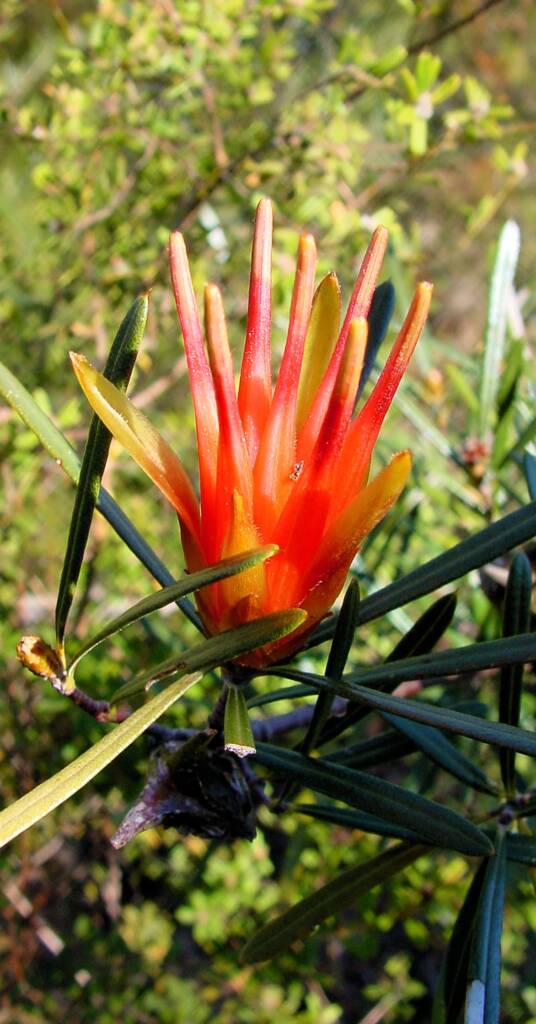
Lambertia is named after the English patron of botany Aylmer Bourke Lambert (1761-1842).
The aove images of the Mountain Devil were photographed in early August in the Blue Mountains, New South Wales.
Erect shrub up to 2 m high, with hairy branchlets.
Leaves: linear to narrow-oblanceolate, 3-7 cm long and 5 mm wide, usually in whorls of 3 dark green, leaves shiny on top, with lower surface paler and hairy, entire margins, tip sharply pointed.
Flowers: spring, summer (can be found flowering other times of the year); tubular, red, in terminal clusters of 7, surrounded by reddish-green bracts about 5 cm long.
Fruit: up to 2.5 cm long, shortly beaked with 2 prominent horns. Found: widespread on the coast and nearby ranges, in heath and open forest, NSW.
Following images of the Mountain Devil was photographed in early February in the Blue Mountains, New South Wales.
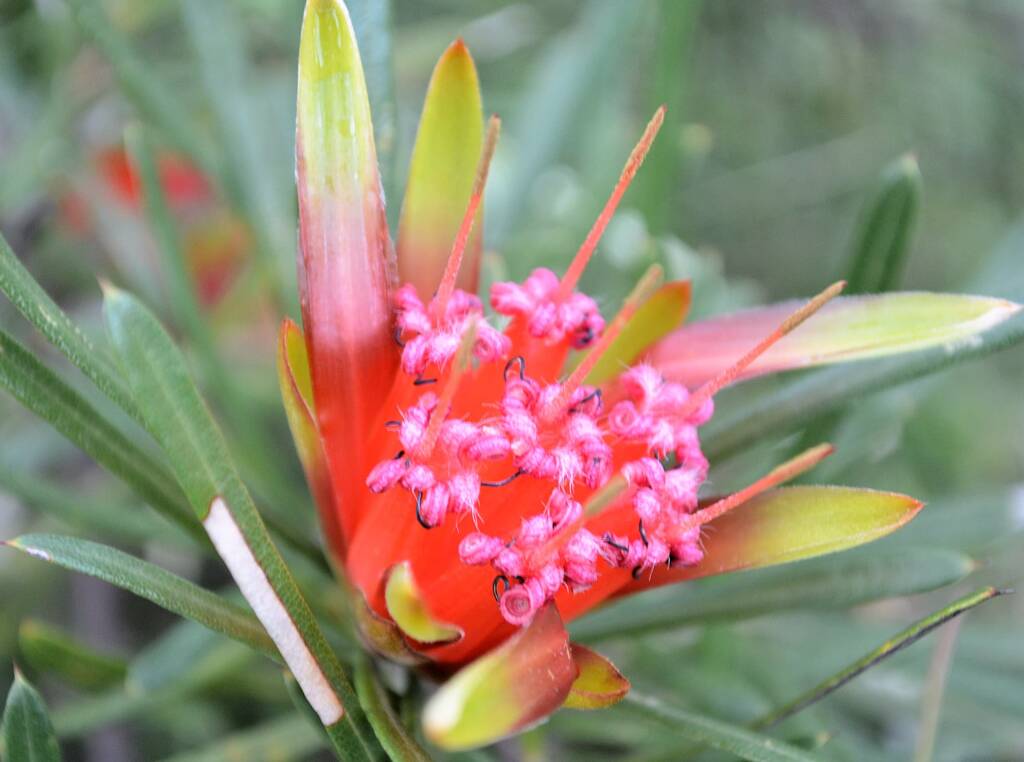
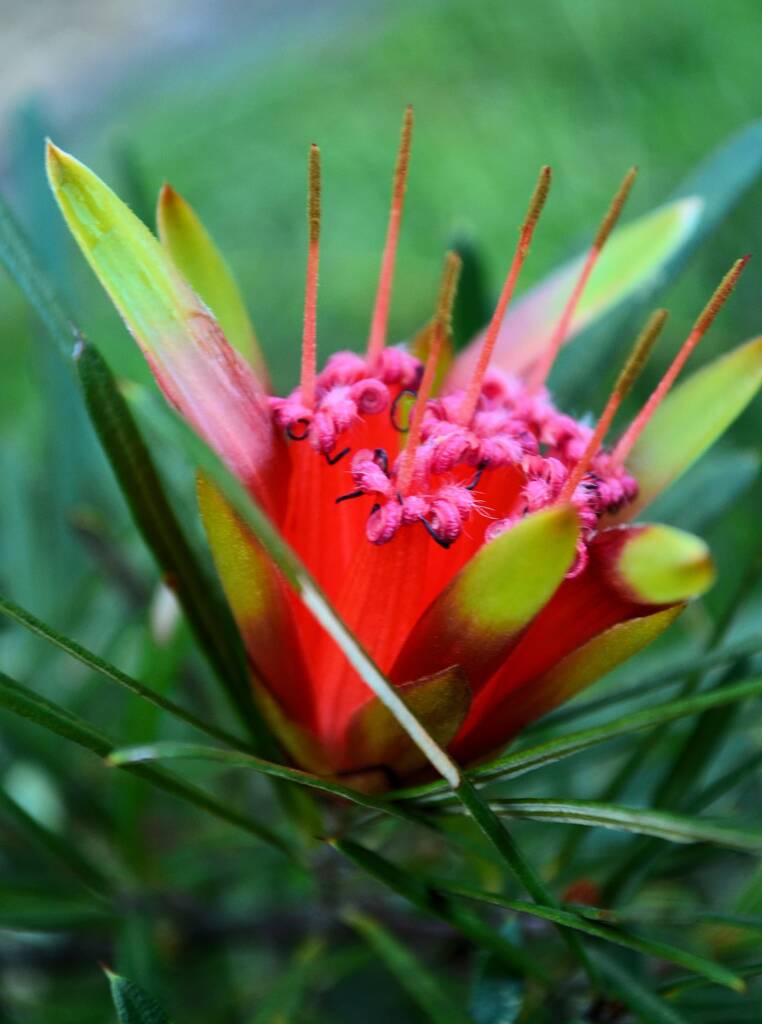
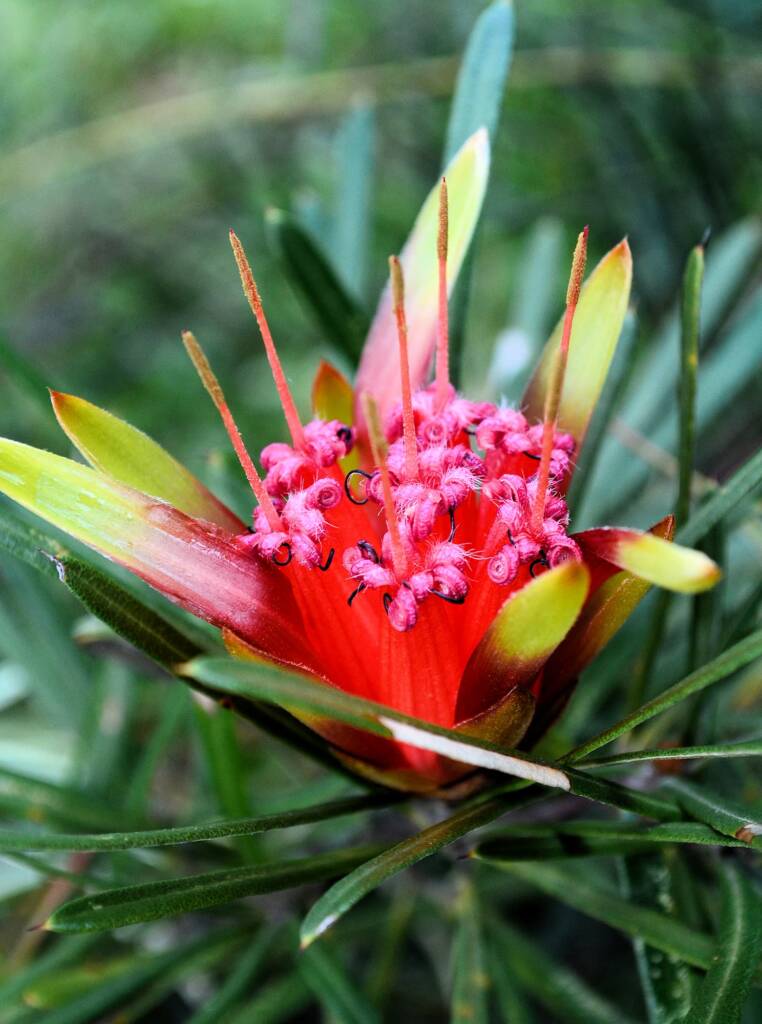
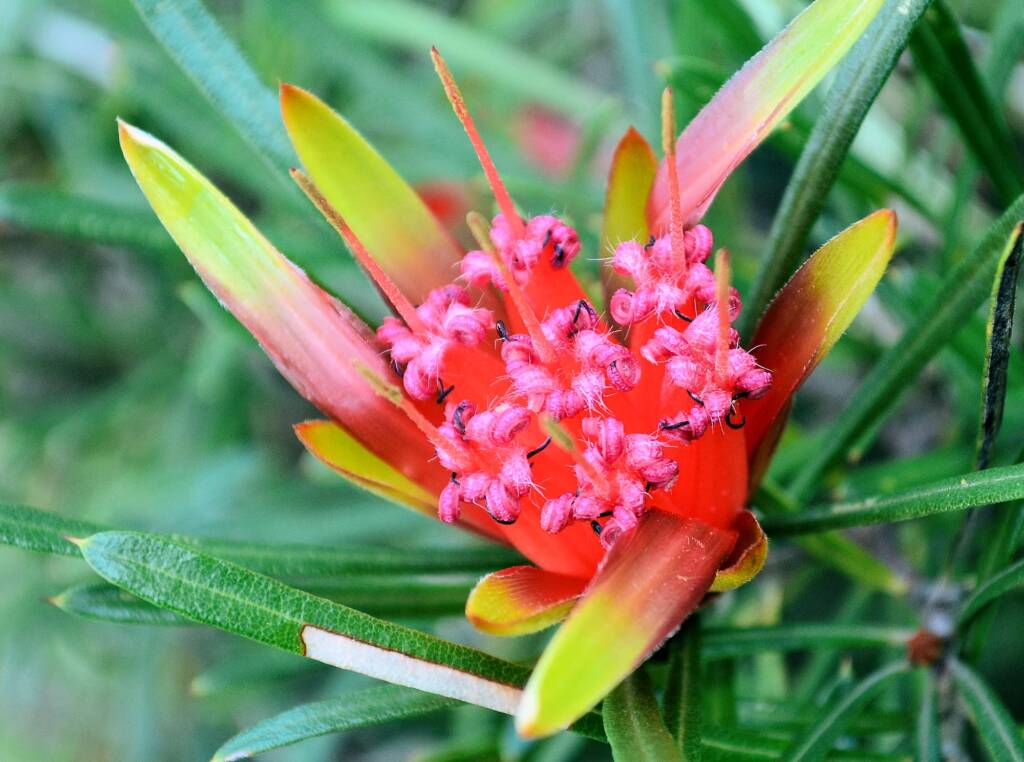
- Scientific classification
- Kingdom: Plantae
- Clade: Tracheophytes
- Clade: Angiosperms
- Clade: Eudicots
- Order: Proteales
- Family: Proteaceae
- Genus: Lambertia
- Species: Lambertia formosa

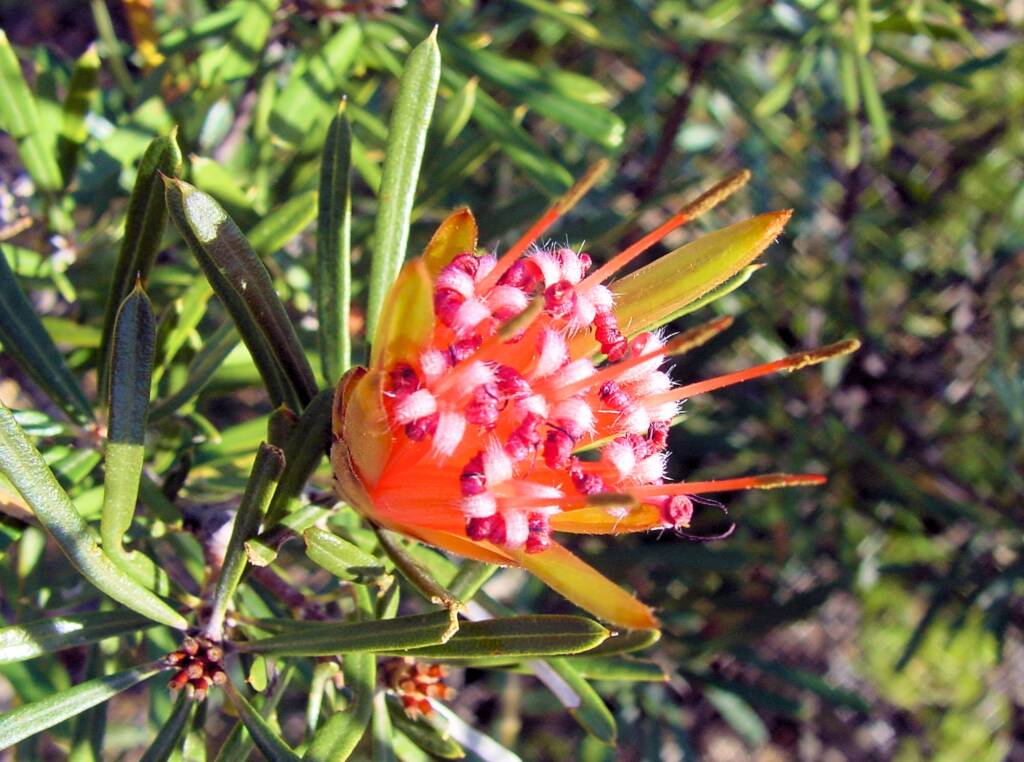
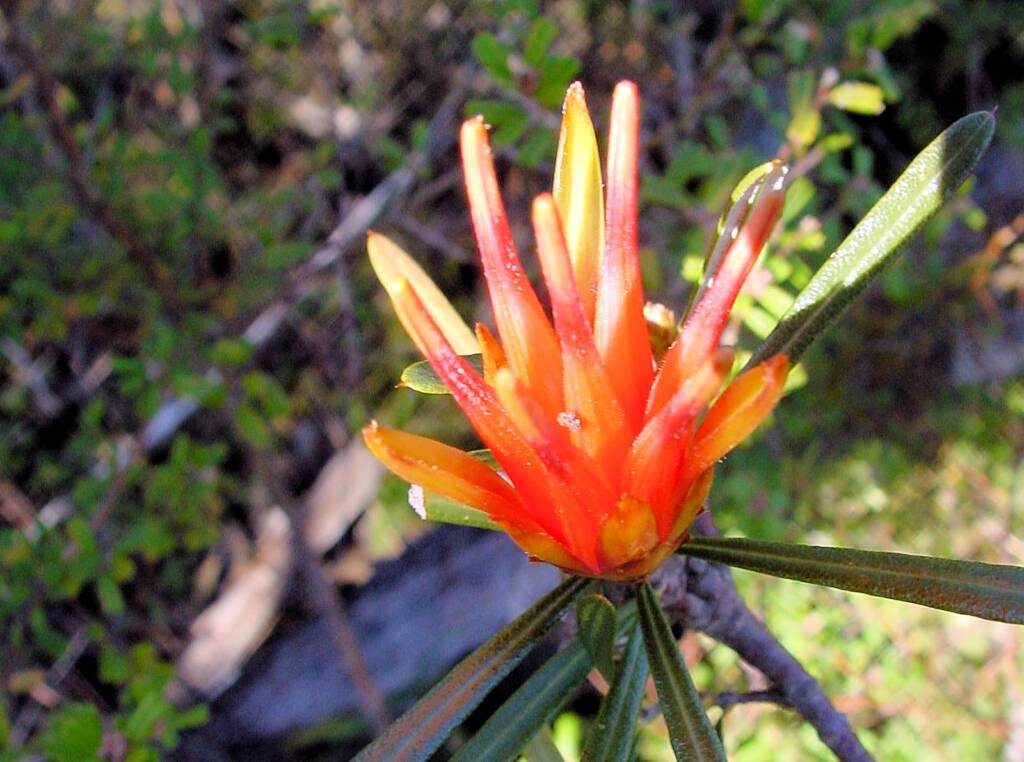
Lambertia spLambertia echinata (Prickly Honeysuckle) Lambertia formosa (Mountain Devil)
FloraFlora in Australia Flora Index Acacia Anigozanthos (Kangaroo Paws) Annual Yellowtop Apium prostratum subsp. prostratum var filiforme Apple Bush (Pterocaulon sphacelatum) Australian Bluebell Australian Gossypium Banksia Batswing Coral Tree Billy Buttons Birdsville Indigo Blue Pincushion Bush Banana Callistemon Callitris drummondii (Drummond’s Cypress Pine) Calothamnus quadrifidus Cape Honeysuckle Cassia fistula (Golden Shower) Cattle Bush Common Heath Crotalaria Darwinia wittwerorum (Wittwer’s Mountain Bell) Daviesia oppositifolia (Rattle-pea) Desert Oaks Drumsticks Eremophila Eucalyptus Ficus Flannel Cudweed (Actinobole uliginosum) Georges Indigo Goatshead Burr (Sclerolaena bicornis) Golden Everlasting Goodenia Gossypium Grass and Grasses Grass Trees Grevillea Grey Germander Hakea Kapok Bush (Aerva javanica) Lambertia sp Leptospermum MacDonnell Ranges Cycad Maireana scleroptera Mexican Poppy Minnie Daisy Mistletoe Family Nardoo Native Apricot Nicotiana megalosiphon subspecies sessilifolia Nuytsia floribunda Orange Spade Flower Orchidaceae Parakeelyas (Calandrinia) Pebble Bush (Stylobasium spathulatum) Perennial Yellow Top Pink Everlasting Pink Rock Wort Poached Egg Daisy Portulaca Proteaceae Ptilotus Quandong Resurrection Fern Rosy Dock Ruby Saltbush Santalum Solanum Spike Centaury Spinifex Storkbill (Erodum cygnorum) Striped Mint Bush Sturt’s Desert Pea Sturt’s Desert Rose Tall Saltbush Tangled Leschenaultia Tar Vine Tribulus eichlerianus Upside-down Plant Urodon dasyphylla Variable Daisy Waratah (Telopea) Wertabona Daisy White Cedar (Melia azedarach) White Indigo White Paper Daisy Wild Passionfruit Wild Stock Woolly-Headed Burr Daisy Woolly Bush Yellow-keeled Swainsona
Flora & FaunaFauna Flora Fauna Flora Funga Glossary Funga Related Topics Scientific Classification Backyard Wildlife Floral Emblems of Australia Wildflowers
